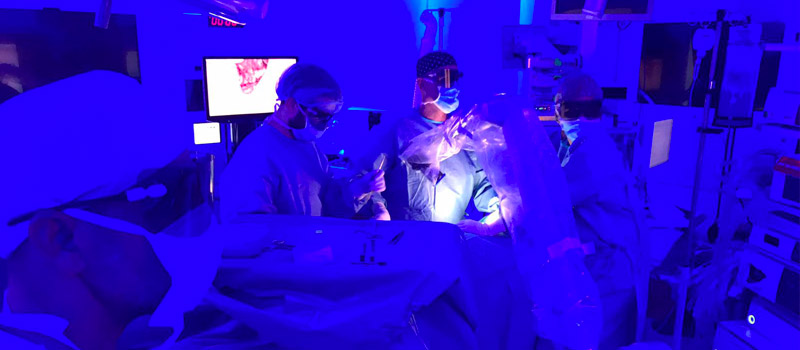18 November, 2019
Adrenal gland surgery: How to select the best approach?

Before any type of surgery, including adrenal gland surgery, the surgeon needs to work with a multidisciplinary team to evaluate and determine preoperative biochemical management, anatomical location, cardiopulmonary evaluation and necessary optimization. Once these conditions have been met, it is crucial to select the most appropriate surgical approach to guarantee the best surgical and oncological results.
IT MAY INTEREST YOU…
– Cirugía del tumor suprarrenal con preservación funcional, mejor calidad de vida
– Diagnóstico de las alteraciones en las glándulas suprarrenales
ENDOSCOPIC TECHNIQUES: THE BEST OPTION FOR ADRENAL GLAND SURGERY
The adrenal gland can be operated on by open surgery or by minimally invasive surgery, which employs endoscopic platforms (retroperitoneoscopic and laparoscopic) and robotics. It is widely demonstrated that endoscopic approaches offer significant advantages when compared to open approaches. Some of these advantages are reduced postoperative pain, intraoperative haemorrhage and related morbidity and mortality in the first 30 days after surgery, as well as a shorter hospital stay. For these reasons, endoscopic adrenalectomy has become the gold standard for the treatment of most adrenal surgery interventions.
“The endoscopic approach offers significant advantages. For these reasons, endoscopic adrenalectomy has become the gold standard for the treatment of most adrenal surgery interventions”
ADVANTAGES OF EACH MINIMALLY INVASIVE APPROACH IN SUPRARENAL SURGERY
Laparoscopic transperitoneal approach
The laparoscopic transperitoneal approach (LRN) offers several advantages. First of all, it offers a “more familiar” view of the anatomy (it is easier to teach). It also allows the examination of the peritoneal cavity and offers more work space (relevant in tumors of considerable size).
Retroperitoneoscopic Approach
The retroperitoneoscopic approach (RPA) also has some advantages. For example, the lack of intraperitoneal organs and viscera manipulation (decreased risk of adhesions and manipulation injuries). It also allows a more direct approach to the adrenal gland which prevents patient repositioning for bilateral adrenalectomies. However, from a technical point of view, retroperitoneoscopic adrenalectomy is a more demanding procedure as the workspace is smaller and the view of the structures is anatomically less familiar to non-experienced surgeons.
Both these minimally invasive approaches can be carried out using a robotic platform like the one we have in barnaclínic+. Clinical studies evaluating the robotic platform for the adrenalectomy have shown that, in trained surgical teams, it can offer similar advantages to the endoscopic adrenalectomy (don’t forget that it’s the gold standard). However, it has a much higher cost.
IT MAY INTEREST YOU…
– ¿Por qué debo guardar reposo tras una cirugía del tumor suprarrenal?
WHEN IS AN OPEN APPROACH RECOMMENDED IN ADRENAL GLAND SURGERY?
In adrenal gland surgery, open approaches are used when dealing with large lesions, in clearly malignant cases, or if there’s a suspicion of malignancy. This is to avoid the rupture of the lesions during surgical manipulation. It has been proved that the risk of capsular rupture is increased with minimally invasive approaches. Although there is no defined size threshold, large adrenal tumors (especially those larger than 10 cm) have a higher risk of malignancy. Likewise, locally advanced tumors with adjacent organ or main vessels invasion (such as invasion of the inferior vena cava [IVC] or occlusion of the left renal vein), offer a lower risk of serious complications with open approaches.
“In adrenal gland surgery, open approaches are used when dealing with large lesions, in clearly malignant cases, or if there’s a suspicion of malignancy”






